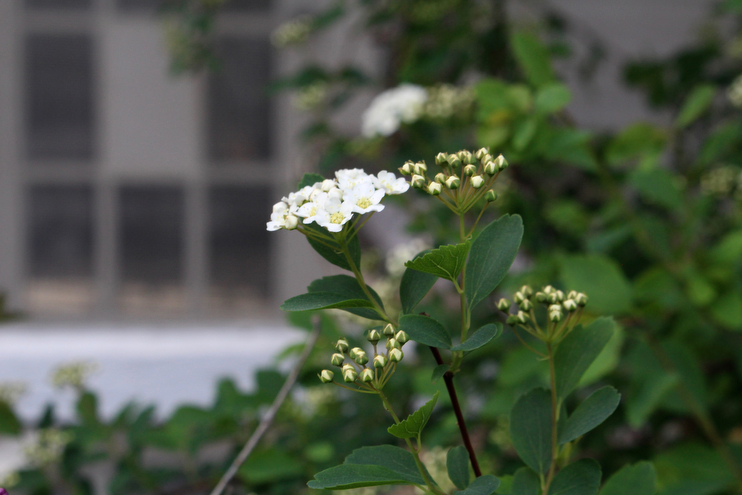

Let’s get started! If you are ready to comment or chat about what you’ve been loving or learning from this book, hop aboard dear ones!
Before we start, I want to share a friendly reminder that this space intended to be a positive and respectful one that lifts this of readers community up as we offer our insights, understandings, inquiries, and observations. Please remember to be kind and gracious to those sharing – opening up is a vulnerable and beautiful thing! Because we are not in person and instead are sharing through our writing, it is important that we all extend grace to one another and give each other the benefit of the doubt. I am so excited to dive in and see where this takes us! And just so we are all on the same page, here are some basic guidelines for this discussion:
DISCUSSION GUIDELINES:
- If you want to share your overall experience thus far and your reaction to your journaling, please do! I would love to hear how these last weeks of reading have been going for you. No judgement here. Life is moving at different paces for all of us and no matter what season you find yourself in, you have a seat at this table.
- If you want to reference a specific question below, try to include the number at the beginning of your comment.
- If you want to comment on someone’s insight or answer a question they pose, do so as a reply and try to refer to them by name. This will help us keep things a bit more organized here.
NEWSLETTER REFLECTION QUESTIONS FROM WEEK 3 & 4:
- Take a moment to journal about all the ways trees currently impact your life. Think about the small details of your day and how trees specifically make things easier or better for you. In light of this, how can we return the favor and be more respectful of them?
- How were trees a part of your life as a child, and how have those experiences helped shape your reverence for and understanding of nature as an adult. If you have kids, how important is it to you to introduce them to the wonder of nature, specifically trees, as a child and why?
- Chapter 21 states, “The scientist [Dr. Martin Gossner] counted 2,041 animals belonging to 257 different species” with reference to research done on ONE old tree in the Bavarian National Forest. What is your reaction to this finding? How does this information affect your views of current deforestation practices?
- What season [spring, summer, autumn, winter] of tree life do you most identify with and why?
- How has this book club helped you pay more attention to the natural world? If so, how has this act of presence spilled over into other areas of your life? Has reading and journaling helped you slow down in areas of your life that were feeling rushed? If yes, how so?
- Do you think that Wohlleben over anthropomorphizes trees in his book—that he makes them, perhaps, too human? Or is that question in and of itself a reflection of our own anthropocentric attitudes that hinder any acceptance of other forms of “being.
- If trees are as receptive as Wohlleben believes they are, should we change how we treat them? If you have a moment, read this article for a bit of supplemental literature that connects to this book we are reading.
- What specific bits of wisdom will you takeaway from this book? How has it changed you over the course of this past month?
With Care,
Amanda
To visit The Hidden Life of Trees Discussion Part I Click Here
.jpg)


Stasi - Jumping to question 8! I really enjoyed the second half of this book and it’s made me more aware of the trees and forests in my community. I’m a wetlands/prairie gal myself, so I really loved getting to know the lives of trees in more detail, and I’ve taken a lot away of wisdom from this book in the sense of living a slower, more purposeful life and avoiding the “hustle” and doing things in my own time, away from the judgement society puts on us.
Mandy Hohenberger - Well, I wrote out a long beautiful post and it disappeared. I’ll come back to it later. I just wanted to thank you for choosing this book, it has reignited a love for nature deep within me. I am enjoying teaching my children all I have learned and together we are awestruck by the intricacies of life growing all around us.
I do find myself thinking of trees in a more human context. There is so much we don’t yet know about the intelligence of other life forms. But thinking this way does make me feel terrible for how we, the human race, have treated this majestic beings. I’d be interested to hear your thoughts on this, Amanda. It feels like a slippery slope. Where do we draw the line in terms of ethics?
Jessie Swenson - Mandy, I had similar thoughts several times reading this book (although I have not yet finished it… ). Thoughts of guilt and sadness at the human race and it’s history and inevitable future of mistreating the earth. It is so hard to be aware and to be a steward of the earth when there is so much pushback related to business, industry and politics. Unsure of the source but the quote “Only when the last tree has been cut, the last fish has been caught and the last stream poisoned will we realize that we cannot eat money”. On a positive note, this book has opened my eyes so much more to the natural and humble world of the inner workings of trees. I have gained even more respect and admiration for these sentients than I had previously.
Kali Ramey Martin - Mandy, I really liked the section he shared from Switzerland’s constitution that says, “account (is) to be taken of the dignity of creation when handling animals, plants and other organisms.” Can you imagine if every single person actually took this simple statement to heart and tried to live by it? What a different world it would be!
Claire Arkin - Jumping to question number 8.
I loved reading this book. This was something I never would have picked out on my own. I have learned so much about nature and of course trees. So many things I never would have thought about like, the human qualities in trees, how many species are out there that we know nothing about, and what the trees are like for those of us who live in neighborhoods. I have so enjoyed pushing myself to be outside more (something I already love). I have found myself pausing more often in nature, sometimes in wonder and awe of it all. The best part for me is that I am teaching my 2.5 year old to do the same. This book has taught me a true appreciation for trees and ALL that they do. I think my husband is sick and tired of me stopping on family walks to tell him a random tree fact. If nothing else I am full on embracing my plant lady vibes and believing now more than ever that nature is the coolest!
Eleni Papadimitriou - Claire,
Your comment expressed exactly what I was thinking. I wasn’t very thrilled to the idea of reading it at the very beginning, till I read the synopsis and ordered it. Then I became super excited. And yes, I kept commenting various quotes to my husband – who now wants to start reading it, hehe.
Last week we went on a road trip through the Italian/Austrian mountains and I kept observing the forests and various trees. Nature is really amazing and I feel grateful for what I recently learned.
This book club was exactly what I needed this period!
Eleni
Claire - So great to hear! Loving being a part of this with all of you.
Kali Ramey Martin - Question *:
I think one of the main things I will take away from this book is the idea that we may be “poorer for losing explanations, but richer for gaining a mystery.” That idea really resonates with where I’m at in life and in faith and I just love the way it applies to so many things, including but not limited to, trees.
I also really appreciated that he flat out says, “the key to climate change is allowing our forests to grow old.” So many times we hear climate change is happening, we need to stop it, we need to be better, but no one tells us what exactly to do about it. I felt like he was saying specifically that we need to change our forestry practices and that alone will make a huge impact.
Another piece I really resonated with was when he was talking about birch trees. “Birches rush through life, live beyond their means and eventually wear themselves out.” They exhaust their resources, take on too much and live at a pace that is unsustainable and overwhelming. Hello, American culture! I couldn’t believe how aptly he described our society in that short paragraph trying to explain birch trees. This was one of my very favorite things about this book- everywhere you turn there are insanely beautiful, true, convicting and powerful metaphors for human life and relationships.
Thanks again for putting in all the work for this book club Amanda, I have enjoyed it so deeply already.
Emily Elle - Kali- you certainly put into words how I felt “poorer for losing explanations, richer for gaining a mystery.” I, too, am in a similar place in faith and have found the mysteries of God to be comforting and inviting. I have always loved a good mystery; I always say that the reason I love science is because there is so much unexplainable but still true.
What I loved is that the author used observable traits about trees that we may already know and he explained them both scientifically and then he went even deeper and turned those lessons into profound observations about our lives. It’s so easy to be open to metaphors when you are familiar with the original idea, such as the young branches near the bottom of the trees, or the changing colors of autumn leaves.
Amanda- your work is so appreciated, this first book has been a wonderful read and has created a truly wonderful community. xx
Kali Ramey Martin - Emily, “so much unexplainable but still true.” SO good. I think I need to repeat this to myself 5,000 times a day. 🙂
admin - Kali, “poorer for losing explanations, but richer for gaining a mystery.” GOOSEBUMPS girl. Thank you for sharing this here, I think we all thirst for more faith, more mystery, and more of the unknown despite the abilities we have to connect to information whenever we want. Perhaps because of that ability. Gosh, I am going to write that one down. x Amanda
Stephanie - Kali, I had the same takeaway when I was reading about the birches exhausting themselves and found the parallel to our culture in many ways. Our pace can be so fast and our lives can be overwhelming. I’m currently reading a book about how the Danes raise their children at a slower pace that encourages family time and coziness. Certainly better than over scheduling and pressuring children to perform! I think that’s the big takeaway for me from this book: to slow down, tune in to nature, tune into the seasons. Maybe that’s why many of us are drawn to Amanda’s space. Also, I love how we finished this book on the cusp of Earth Day! Just going to share one last reflection from my journal below.
(Question 2) As a child, I distinctly remember the trees in my front yard. They served as a hiding place, a picnic spot, and a place to play tag. It felt as if the trees provided imagination and adventure and we didn’t have to go very far. Trees can be a safe haven for children. By introducing children to nature early on, only then will they develop an appreciation for our world. Children instinctively want to explore, investigate, and discover. Nature is the perfect playground.
Kali Ramey Martin - Stephanie, what is with those Europeans always figuring things out looooooong before us Americans? 🙂 And I totally agree about being drawn to Homesong for those reasons. Time and time again, Ms. Amanda has given me hope that there is another way to raise my family and I’ve clung to it as I’ve journeyed through first time motherhood. Such an encouragement!
Carolyn - (Question 6): I do think the author overly anthropomorphizes trees. I happen to love thinking about trees through a human lens but when he clearly attributes them with human *emotions*, it goes a little too far. We can say, for instance, that a tree reacts to an insect biting it’s bark (I believe this was the example in the article you linked to in a previous newsletter). But to say that that reaction is an emotion, like a human emotion, is putting too much of our human story onto the tree. I think there is a lot to be learned from trees, but it doesn’t mean we have to make the trees into humans. Instead of thinking, oh trees are just like us! We could be saying, oh, that’s interesting, and you know, we aren’t too different from trees. The author is writing about trees but is really putting the human experience at the center. Trees do have this wonderfully “hidden life” but I also believe the same could be said of almost every living thing – other types of plants, the ocean, the cycle of the moon … there is much to be learned everywhere we look!
Lia behr - Hi, how do I join the book club?!
Kylie - (Question 8:)
I came to the club a little later than I had originally hoped, so I zipped through this book in order to catch up with you all. With that said, every chapter left me completely in awe. I was amazed at how many connections and similarities I was able to find between the lives of trees and the lives we live as humans. I am not yet a mother but this book gave me a strong hint at the importance of a slow start in life, and making sure you are connected to the community around you that supports you. There was one part of the book that mentioned sometimes a tree, for whatever reason, decides to stop participating in being part of the forest community around it. That specific tree is now considered a loner, with no support system if something goes wrong. That section of the book truly resonated with me, as a fairly introverted homebody. It made me realize how important all relationships are and that they have to be consistently maintained in order to stay healthy, which a lot of the time I think people forget. I think the author did a wonderful job at drawing the parallels between humans and trees, perhaps if he hadn’t anthropomorphized as much as he did it would not be as easy to see all of the similarities there truly are.
Such a great read, I am already recommending it to friends and family!
Jordan - Hey Amanda! I would love to join your book club starting in June, is contacting you here the best way to do that?